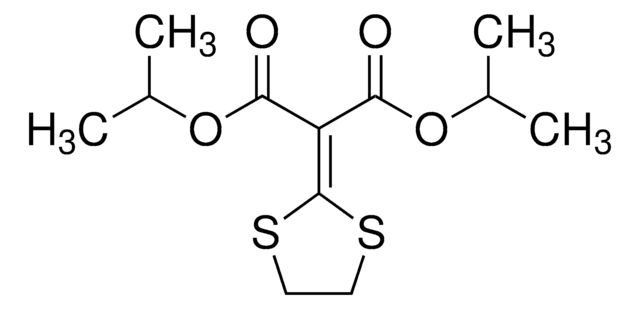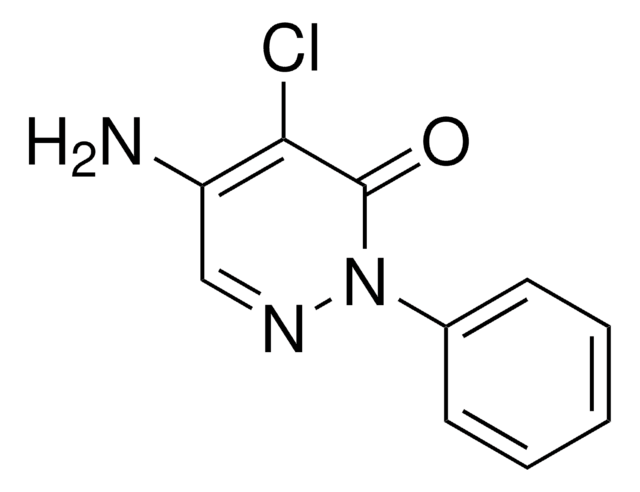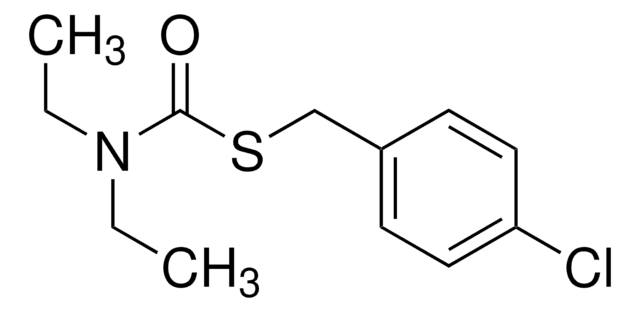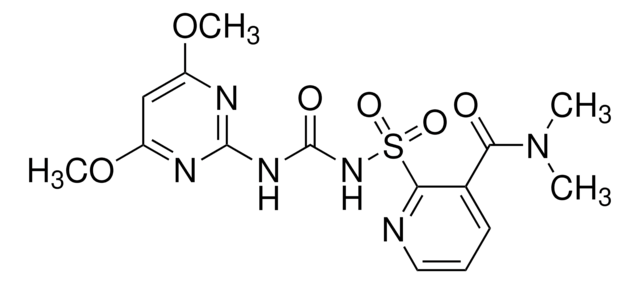76547
Isoprothiolane
PESTANAL®, analytical standard
Synonym(s):
Diisopropyl 2-(1,3-dithiolan-2-ylidene)malonate
Sign Into View Organizational & Contract Pricing
All Photos(2)
About This Item
Empirical Formula (Hill Notation):
C12H18O4S2
CAS Number:
Molecular Weight:
290.40
Beilstein:
2128528
MDL number:
UNSPSC Code:
41116107
PubChem Substance ID:
NACRES:
NA.24
Recommended Products
grade
analytical standard
Quality Level
product line
PESTANAL®
Assay
≥98.0% (HPLC)
shelf life
limited shelf life, expiry date on the label
technique(s)
HPLC: suitable
gas chromatography (GC): suitable
application(s)
agriculture
environmental
format
neat
storage temp.
2-8°C
SMILES string
CC(C)OC(=O)\C(C(=O)OC(C)C)=C1/SCCS1
InChI
1S/C12H18O4S2/c1-7(2)15-10(13)9(11(14)16-8(3)4)12-17-5-6-18-12/h7-8H,5-6H2,1-4H3
InChI key
UFHLMYOGRXOCSL-UHFFFAOYSA-N
Looking for similar products? Visit Product Comparison Guide
Related Categories
General description
Isoprothiolane is a systemic fungicide, which is used in controlling diseases rice stem rot, rice blast and Fusarium leaf spot on rice. Its mode of action basically involves the inhibition of penetration and elongation of infecting hyphae via inhibiting the formation of infecting peg or cellulose secretion.
Application
Isoprothiolane may be used as a reference standard in the determination of isoprothiolane in food samples using gas chromatography coupled with mass spectrometry (GC-MS).
Refer to the product′s Certificate of Analysis for more information on a suitable instrument technique. Contact Technical Service for further support.
Packaging
Bottomless glass bottle. Contents are inside inserted fused cone.
Legal Information
PESTANAL is a registered trademark of Merck KGaA, Darmstadt, Germany
Choose from one of the most recent versions:
Already Own This Product?
Find documentation for the products that you have recently purchased in the Document Library.
Customers Also Viewed
H Katamoto et al.
Nihon juigaku zasshi. The Japanese journal of veterinary science, 52(6), 1189-1197 (1990-12-01)
To study effects of isoprothiolane and phytosterol on dietary fat necrosis, 3 groups of rats were fed hardened-tallow (HT) diet. Two groups of rats received either isoprothiolane (50 mg/kg) or phytosterol (20 mg/kg) orally once a day consecutively for 10
Suneet Mittal et al.
Journal of cardiovascular electrophysiology, 13(4), 342-346 (2002-05-30)
Two randomized trials (Multicenter Automatic Defibrillator Implantation Trial [MADIT] and Multicenter Unsustained Tachycardia Trial [MUSTT]) suggest that implantable cardioverter defibrillator (ICD) placement is associated with improved survival in patients with coronary artery disease, depressed left ventricular function, and nonsustained ventricular
Z Feleke et al.
Water science and technology : a journal of the International Association on Water Pollution Research, 43(11), 25-33 (2001-07-11)
Biological denitrification and trace pesticide removal in a combined biofilm-electrode reactor/adsorption process has been investigated. In long-term (more than 260 days) continuous experiments, influent and effluent concentrations of nitrate, nitrite, isoprothiolane and gas composition were measured at different electric current
H Okada et al.
The Journal of veterinary medical science, 61(5), 553-556 (1999-06-24)
This study was performed to investigate the effects of isoprothiolane on cell growth and the production of interleukin (IL)-1 and IL-6 by bovine mammary epithelial cells in vitro. Isoprothiolane increased proliferation of mammary epithelial cells in a dose-dependent manner at
Y Ishida et al.
Physiology & behavior, 60(2), 633-638 (1996-08-01)
Responses of three chemical senses, olfaction, taste, and pit organ sense, to three pesticides were studied electrophysiologically in carp, Cyprinus carpio. Only olfaction was responsive to the three pesticides at behavioral avoidance levels, which were determined in a previous study.
Our team of scientists has experience in all areas of research including Life Science, Material Science, Chemical Synthesis, Chromatography, Analytical and many others.
Contact Technical Service










